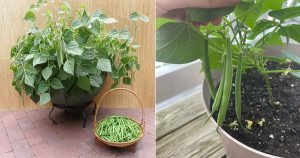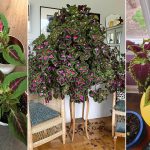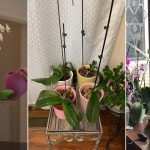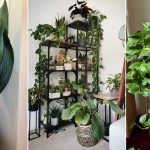I’m very excited to be participating in the GROW project. Basically, garden bloggers all over the internet have joined together to grow the same plant this season. We’re all going to share our progress and thoughts on the plant on the first Sunday of the month. The plant selected is a variety of nasturtium called ‘Spitfire’.
We’re not technically supposed to start the project until April, but I’ve been busy researching nasturtiums, and wanted to share what I’ve learned, and my own previous experience, in case you want to grow some nasturtiums too. Be sure to check back on the first Sunday of each month, because I have all sorts of things planned for these seeds, such as testing different germination methods, combination ideas, taking a look at pests, growing it as both a spiller and up a trellis, and even trying ‘Spitfire’ indoors.
Nasturtiums are both edible and ornamental plants. Their shield shaped leaves have a peppery flavor, and their color-saturated flowers are also tasty. They come in a variety of shapes (bushy, trailing, and climbing), and the flowers can be both double (many ruffled petals) or single (simple flowers that are no less charming). There are even varieties with variegated leaves.
Great for Beginners
Nasturtiums are a great plant for beginners to try, because they grow quickly, and actually thrive on a little neglect. If you fertilize them too much (or plant them in really fertile soil), they tend to make a lot of leaves and not very many flowers. And if you’re going to err one way or the other, err on the side of watering less. I once had them in a pot that got watered all the time and they seemed to use the extra resources to make extra leaves, not flowers. If you wait until the top few inches of soil are dry, and then water, you should be fine.
You can grow nasturtiums in full sun or partial shade. Though I’ve found that if there is a strong light source, and they are in partial shade, they will stretch towards the light.
The only tricky part about caring for nasturtiums is that they tend to be aphid magnets. Though some people intentionally grow them for that reason. They place nasturtiums close to their vegetable plants with the hopes that the nasturtium will attract the aphids away from the vegetables.
Starting from Seed
It’s sometimes hard to find nasturtium plants in nurseries, because they aren’t exactly thrilled about having their roots disturbed. Though this shouldn’t discourage you from trying nasturtiums, as the seeds are extremely easy to find, and not too difficult to get started. The one thing to remember with nasturtiums is that they have a hard seed coat, and you’ll have a better germination rate if you soak the seeds in warm water overnight, or scratch the seed coat with sand paper. I’ll be trying out both methods (and possibly several more) and report my findings on April 4th.
If you want to start nasturtiums indoors, sow them in a biodegradable peat pot or a recycled newspaper pot that doesn’t have to be removed when you transplant your nasturtiums outdoors. Sow them indoors 2-4 weeks before your last frost. Of course, you can save yourself the trouble and directly sow them directly in their final destination outside when there is no longer any danger of frost in your area.
Some Particularly Beautiful Varieties:
- ‘Black Velvet’ has deep mahogany colored flowers held above the light green foliage. Forms pretty mounds of flowers.
- ‘Alaska’ has jewel tone flowers and leaves with a random variegation pattern.
- ‘Cobra’ has rich red flowers and deep green leaves. It supposedly got its name because it likes to slither amongst bushier plants.
- ‘Milk Maid’ has pale cream flowers with buttery yellow throats.




